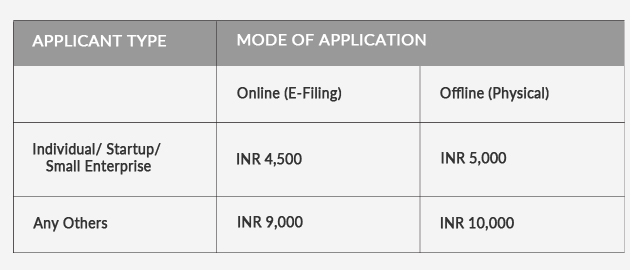Registration of trademarks in India: All you need to know

Legal & Compliance
314 week ago — 10 min read
Background: A trademark is an insignia, phrase or symbol that distinguishes your brand and products from the rest in the market. Having a trademark gives you the lawful right to protect your product, change or modify it and also prevents the misuse of your product and brand by some other person or company.
In recent times, while Trademark is emerging as an important asset for business entities to establish their presence in India and abroad, it is at the same time becoming vulnerable to copy by competitors. Therefore, it is crucial for business owners to have knowledge about trademarks and the procedures involved to register the same. Here is an effort to highlight the process to register a trademark in India and incidental matters related to registration.
Understanding the term 'Trademark'
A Trademark (popularly known as logo or brand) can be termed as a symbol, a mark, a label or an expression which represents an entity or goods or service and which is capable of distinguishing the goods and services than those of others in the industry.
It not only gives the registered owner an exclusive right to use such mark but also prevent its identity from being used by other competitors. Registration of trademark is now a necessity as it may become a valuable asset for the entity or an individual getting it registered.
Types of Different Marks
- Standard Mark: Standard marks are basic marks which denote the source of goods and services and which are not to be classified as collective or certification mark. This is the most common mark used for trademark application.
- Collective Mark: Collective mark is generally used to distinguish the origin of a product or service at a specific geographical region or by specific group or association. The owners of collective marks are generally regional institutions.
- Certification Mark: These are the marks used to indicate that the particular product meets the set standards specified with respect to quality or safety or any such thing.
- Series Mark: These are marks which are similar to each other substantially and differ only with non-distinctive characters.
Validity of a trademark once registered
A trademark registered in India is valid for 10 years from the date of its registration, once expired, it can be renewed for further 10 years from the date of expiration by filing Form TM-R.
Procedure of renewal of a trademark
The Registrar of Trademark sends a notice to the registered owner of trademark to get the trademark renewed before expiration of trademark. In case the registered owner fails to renew within the time limit, the trademark can be renewed within further 6 months from expiration date after paying a late fee along with renewal charges if still the registered owner fails to renew then s/he gets extension of 6 more months in which s/he can restore the trademark by paying restoration fees.
Effect of registering a trademark
Once a trademark is registered with Registrar of Trademark, the registered owner gets an exclusive right to use such trademark. It is important to note that the conferred right is only limited to republic of India. If an entity wants to get the global protection, then it needs to apply for the registration in every country individually.
Steps to be followed to Register a Trademark in India
- The first and foremost step to register a trademark is to do a details research of trademark to make sure the trademark to be applied is not already registered in the name of some other Entity or Individual. To have a details research one need to identify the class or category for which trademark is to be registered.
- As per Rule 23 of the Trademark Rules, 2017, a Trademark can be registered by filing a written Application to the Registrar of Trademarks in Form TM-A duly signed by the applicant or his agent on behalf of the Applicant or by creating a Login id at Trademark website and selecting New Form Filing using Class DSC of Applicant or Agent.
Important Details to be entered in Form TM-A
- Type of Applicant: Individual / Startup / Small Enterprise / Others
- Nature of the Applicant: Individual / Partnership / Body Corporate including Company / Limited Liability Partnership
- Details of Applicant: Name, Trading Address and Service Address, Phone Number, Email Address
- Details of Trademark Agent: Name, Phone Number, Email Address, Registration Number
- Nature of Trademark Agent: Registered Trademark Agent/Advocate/Constituted Attorney
- Category of the Trademark: Word Mark / Device Mark / Color / three Dimensional Mark / Sound (described below)
- Description of Trademark: Details and basic feature of the mark is to be mentioned here. If the mark is color specific the same is required to be mentioned too.
- Class of Trademark and description of Goods and Services: Class of Goods to be mentioned along with a brief description of the Goods or Services being offered is to be mentioned
- Date of first usage of Trademark or proposed date of first usage of Trademark: Mention the date when the mark was brought into usage by the Applicant (accompanied by a user Affidavit) or the date when the Applicant is willing to use the mark.
- Regularly check the status of Trademark Application on the Official website of Trademark Department and furnish required details, if any.
Different Marks used in Form TM-A and its meaning
- Word Mark: A Word mark consist of word and combination of words, numbers and symbols in standard Form which can be distinctive. For example: IBM
- Device Mark: Device mark means logo or label or word or combination of words used with specific style or format or shape. Eg: Google
- Colour: Colour mark consist a specific colour or combination of colors to indicate the usage or origin of Goods or Services.
- Three Dimensional Mark: It is used the where the product has particular shape and it is well indicated in three dimensional mark.
- Sound mark: A sound can be so distinctive to indicate something that’s why it becomes necessary to protect such sound mark.
Status of the Trademark Application:
Once an Application is filed, the applicant gets an Application number which enables him to check the status. One is required to check the status of Form from time to time at the Intellectual Property India government website under head Trademark Application / Registered Mark.
Following are the different types of Status:
- Formality Check Pass / Fail: Once a Form is filed it passes through all the basic formalities like description of goods and services and the documents required to be attached if some discrepancy is found at the initial level then Formality Check becomes fail.
- Marked / Sent for Examination: Once the Formalities checked, the form is sent for Examination to the Registrar which examines the Form and finds any irregularity and duplicity in the Mark
- Accepted & Advertised: When the Department accepts the Form does not have any objection and the mark is advertised in journal.
- Objection: Upon Examination of Form TM-A, If examiner encounters any inconsistency in the Form, it may raise objection under section 9 and Section 11 of the trademark Act, 1999 regarding description of Goods and Services and other common issues and require a reply to be satisfied that why the Objection should not be raised.
- Opposition: Once the mark is advertised in the journal and someone finds it similar to their registered mark they may write to Examiner and oppose the Application which leads to hearing.
- Abandoned: When there is no response from the Applicant’s side on the objection raised by Examiner or opposition within the specified time then it is marked as abandoned.
- Withdrawal: If the Applicant withdraws the Application filed then the status becomes withdrawal.
- Registered: Once the Examiner is completely satisfied with the Application and there is no opposition filed, the status gets Registered.
Time Duration to register a Trademark
In the best cases the minimum time to be taken to register a Trademark is 8-12 months, in case there is Objection raised, it may lead to delay of a year and if there is opposition filed by a party then the Application may take nearly 2 years to get registered.
Fees to be paid for Trademark Application

Making Application for Correction to the Application
When some clerical error is required to be corrected in the filed Form, TM–M can be used to make such correction. Column (a) of Part B of is required to be filled in Form TM-M and can be filed within 30 days. Fees to be paid is INR 900 via online mode and INR 1,000/- via offline mode.
Trademark Application in multiple Classes
Multiple Trademark can be applied in one Form TM-A, important to note that fees for each class is to be paid separately. One Application number is generated for all Applications.
Author Disclaimer: Although care has been taken to ensure the accuracy, completeness and reliability of the information provided, author is not responsible for any errors or omissions in the article therefore. Users of this information are expected to refer to the relevant existing provisions of applicable Laws. The user of the information agrees that the information is not professional advice and is subject to change without notice. The author assumes no responsibility for the consequences of the use of such information.
To explore business opportunities, link with me by clicking on the 'Invite' button on my eBiz Card.
Disclaimer: The views and opinions expressed in this article are those of the author and do not necessarily reflect the views, official policy or position of GlobalLinker.
Network with SMEs mentioned in this article
View Kamlesh 's profile
Most read this week
Trending











Comments (5)
Share this content
Please login or Register to join the discussion